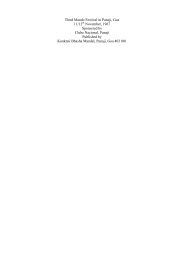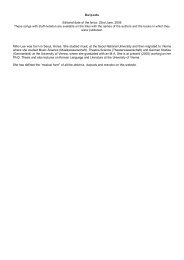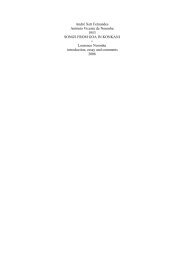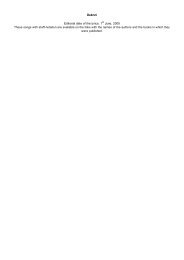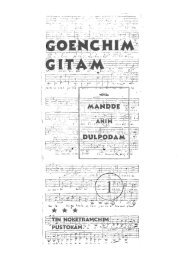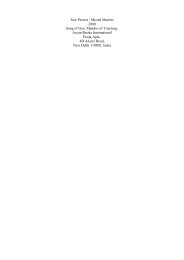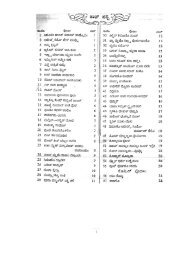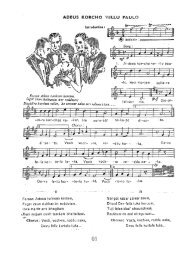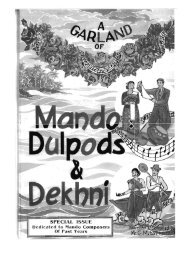Booklet - Songs from Goa
Booklet - Songs from Goa
Booklet - Songs from Goa
You also want an ePaper? Increase the reach of your titles
YUMPU automatically turns print PDFs into web optimized ePapers that Google loves.
- - ----------<br />
THE RHYTMN OF THE MANDO<br />
The rhythm of the Manda is up-to-now a controversial matter<br />
among musicians, historians and writers and opinions differ<br />
greatly according to each one's thinking, though the rhythm<br />
of all the Mande are uniformly moderate in their performance.<br />
Most of the Mande singers, musicians and Gumott players<br />
seem not to be concerned with the proper and uniform<br />
rhythmic Time-Signature as long as they know by ear <strong>from</strong><br />
the ascendant tradition the tune of a chosen Manda, without<br />
proper realization and acknowledgement of its rhythmic tone<br />
of me lodico-harmonic musical sense.<br />
Even though the late Prof. Lucio Rodrigues, who was<br />
supposed to be a well-known authority on <strong>Goa</strong>nfolklore,<br />
states in MARG Vol. VIII, No.1, 1954: .<br />
"The rhythm ofthe Manda is in 6/ 8 with a long accent ofthe fifth<br />
beat."<br />
He gives no reason for his assertion and one fails to<br />
understand why he prefers the compound duple deprived of<br />
the so badly-needed strong and medium beats for the proper<br />
interpretation of harmonically guided melody ofthe Mande.<br />
The explanation in this matter by Prof. Michael Martins will<br />
serve to clarify the confusion aroused in the readers:<br />
"It is to be noted that % and 3/8 are both simple Time<br />
Signatures and white %has 3 crotchets beats to each bar, the<br />
3/ 8<br />
has three quaver-beats to each bar. The 6/8 Time<br />
Signature is a Duple Compound, it has two beats of three<br />
pulses each andso there are six quavers to the bar."<br />
And here again it is worth noting that the learned Prof.<br />
Michael Martins states in his above-mentioned article on the<br />
Manda:<br />
''The rhythm on the other hand, is characterized by an accent on<br />
the first beat and another the most prominent one on the fifth beat.<br />
The melody ofthe Manda proper can be said to begin on the fifth<br />
beat, even though the fifth beat that starts the melody remains<br />
invariably unaccented, asfor example:<br />
There are however some irregular forms comprising oftwo stanzas<br />
without the estrebilho or those that start the melody on the first or<br />
second beat instead ofthe fifth beat, but allfaithfully obey the same<br />
rhythmic measure . .,<br />
10



